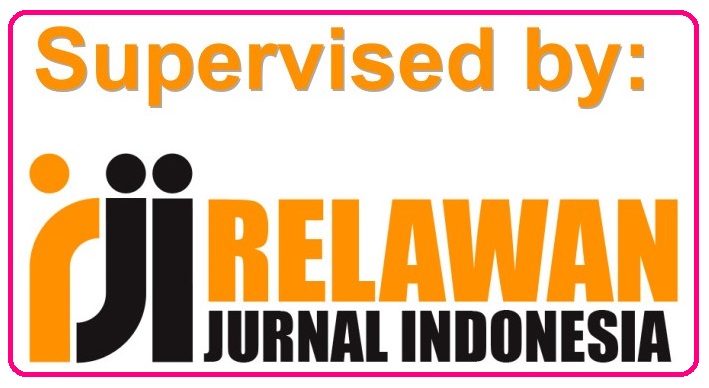Factors Influencing the Use of ICT for English Language Learning of Indonesian EFL University Students
DOI:
https://doi.org/10.31849/elsya.v4i1.6882Keywords:
Information and Communication Technology (ICT), Indonesia, Structural Equation Modelling, Technology Acceptance Model (TAM), University StudentsAbstract
This study examines the factors of the Technology Acceptance Model (TAM) that influence the acceptance of ICT use for English language learning of EFL University Students. This study also addresses the possible obstacles that affect and limit the use of ICT by adding motivation and ICT skills as extended TAM variables. This area of research topic is unexplored in the Indonesian context, especially in higher education institution. An analysis of these factors can assist instructors to understand how students learn using ICT and in providing useful advice to them during the learning process. The quantitative method was applied in this study, which included 303 students' teachers of English Education at a state university in Jambi, Indonesia. The instrument used in collecting the data was an online questionnaire. Data collected were analyzed by using Structural Equation Modeling (SEM) with SmartPLS3 program to analyze the proposed hypotheses formed in order to meet the study objectives. The SEM result indicated that the factors of the technology acceptance model are the main factors affecting the ICT use. The study concluded that the influence of motivation and skills for ICT usage was mediated by three main TAM variables, namely perceived ease of use, perceived usefulness, and attitudes.
References
Al-Rahmi, W. M., Yahaya, N., Aldraiweesh, A. A., Alamri, M. M., Aljarboa, N. A., Alturki, U., & Aljeraiwi, A. A. (2019). Integrating Technology Acceptance Model with Innovation Diffusion Theory: An Empirical Investigation on Students’ Intention to Use E-Learning Systems. IEEE Access, 7(c), 26797–26809. https://doi.org/10.1109/ACCESS.2019.2899368
Al Arif, T. Z. Z. (2019). Indonesian University Students’ Perception and Expectation towards ICT Use in Learning English as a Foreign Language. Indonesian Journal of English Language Teaching and Applied Linguistics, 4(1), 133–145.
Alfarwan, S. (2019). University student access to and use of electronic devices: A latent English language learning potential. Teaching English with Technology, 19(1), 102–117. http://cejsh.icm.edu.pl/cejsh/element/bwmeta1.element.desklight-464a8909-4333-48ea-a1d8-cbb571df950e
Benghalem, B. (2015). The effects of using microsoft power point on EFL learners’ attitude and anxiety. Advances in Language and Literary Studies, 6(6), 1–6. https://doi.org/10.7575/aiac.alls.v.6n.6p.1
Boutonglang, D., & Flores, F. (2011). A study on integrating technology to engage 7th graders into an English as a foreign language (EFL) classroom in a rural secondary school, Thailand. International Journal of Arts & Sciences, 4(18), 195–206.
Dalton, M. L. (2011). Social Networking and Second Language Acquisition: Exploiting SkypeTM Chat for the Purpose of Investigating Interaction in L2 English Learning [Iowa State University, The USA]. http://lib.dr.iastate.edu/etd/10221/
Davies, G., & Hewer, S. (2009). Introduction to New Technologies and How They Can Contribute to Language Learning and Teaching. Module 1.1. in G Davies (Ed.), Information and Communication Technology for Language Teachers (ICT4LT). Thames Valley University.
Fatiha, M., Sliman, B., Mustapha, B., & Yahia, M. (2014). Attitudes and motivations in learning English as a foreign language. International Journal of Arts & Sciences, 07(03), 117–128.
Habibi, A., Mukminin, A., Riyanto, Y., Prasojo, L. D., Sulistiyo, U., Sofwan, M., & Saudagar, F. (2018). Building an online community: Student teachers’ perceptions on the advantages of using social networking services in a teacher education program. Turkish Online Journal of Distance Education, 19(1), 46–61.
Idowu, S. O., & Gbadebo, A. D. (2017). Extent of utilization of information and communication technology tools by English language teachers in Ijebu-Ode and Odogbolu local government areas of Ogun State, Nigeria. International Journal of Arts & Sciences, 09(04), 589–596.
Ilter, B. G. (2009). Effect of technology on motivation in EFL classrooms. Turkish Online Journal of Distance Education, 10(4), 136–158.
Jakob, J. C., & Afdaliah, N. (2019). Using oxford smart choice multi-ROM to develop the students ’ listening ability. Journal of Education, Literature, and Culture, 4(1), 25–34.
Kennewell, S. (2004). Meeting the Standards in Using ICT for Secondary Teaching. Routledge.
Kessler, G. (2018). Technology and the future of language teaching. Foreign Language Annals, 51(1). https://doi.org/10.1111/flan.12318
Kramsch, C., & Thorne, S. L. (2002). Foreign Language Learning as Global Communicative Practice. In D. Block and D. Cameron (Eds), Globalization and Language Teaching. Routledge.
Krista, G., & Jay, B. (2001). English in the digital age: Information and communications technology and the teaching of English. Journal of Adolescent & Adult Literacy, 44(4), 388–390.
Lai, C. (2013). A framework for developing self-directed technology use for language learning. Language Learning and Technology, 17(2), 100–122.
Mei, B., Brown, G. T. L., & Teo, T. (2018). Toward an Understanding of Preservice English as a Foreign Language Teachers’ Acceptance of Computer-Assisted Language Learning 2.0 in the People’s Republic of China. Journal of Educational Computing Research, 56(1), 74–104. https://doi.org/10.1177/0735633117700144
Meleisea, E. (2007). The UNESCO ICT in Education Program. United Nations, Education, Scientific, and Cultural Organization.
Murray, D. E. (2005). Technologies for second language literacy. Annual Review of Applied Linguistics, 25(1), 188–201.
Oktalia, D., Ngadiso, & Supriyadi, S. (2018). Integrating ICT in English language learning : Students ’ perceptions of a state university in Jambi Province. International Journal of Language Teaching and Education, 2(1), 49–59.
Rahim, M. N., & Chandran, S. S. C. (2021). Investigating EFL Students’ Perceptions on E-learning Paradigm-Shift During Covid-19 Pandemic. Elsya : Journal of English Language Studies, 3(1), 56–66. https://doi.org/10.31849/elsya.v3i1.5949
Reinders, H., & White, C. (2016). 20 years of autonomy and technology: How far have we come and where to next? Language Learning and Technology, 20(2), 143–154.
Sabti, A. A., & Chaichan, R. S. (2014). Saudi high school students’ attitudes and barriers toward the use of computer technologies in learning English. SpringerPlus, 3(1), 1–9. https://doi.org/10.1186/2193-1801-3-460
Scherer, R., Siddiq, F., & Tondeur, J. (2019). The technology acceptance model (TAM): A meta-analytic structural equation modeling approach to explaining teachers’ adoption of digital technology in education. Computers and Education, 128, 13–35. https://doi.org/10.1016/j.compedu.2018.09.009
Shevchenko, M. V. (2018). The role of authentic videos in teaching English at technical universities. Advanced Education, 2015(4), 66–70. https://doi.org/10.20535/2410-8286.57306
Tri, D. H., & Nguyen, N. H. T. (2014). An exploratory study of ICT use in English language learning among EFL university students. Teaching English with Technology, 14(4), 32–46.
Wang, Y. C., & Hsu, L. (2020). Shall we go to the MALL? — Students’ perceptions of a business English learning app. International Journal of Information and Education Technology, 10(2), 110–116. https://doi.org/10.18178/ijiet.2020.10.2.1348
Weng, F., Yang, R. J., Ho, H. J., & Su, H. M. (2018). A tam-based study of the attitude towards use intention of multimedia among school teachers. Applied System Innovation, 1(3), 1–9. https://doi.org/10.3390/asi1030036
Zhang, D., & Pérez-Paredes, P. (2019). Chinese postgraduate EFL learners’ self-directed use of mobile English learning resources. Computer Assisted Language Learning, 0(0), 1–26. https://doi.org/10.1080/09588221.2019.1662455
Zhang, H., Song, W., & Burston, J. (2011). Re-examining the effectiveness of vocabulary learning via mobile phones. Turkish Online Journal of Educational Technology, 10(3), 203–214.
Downloads
Published
Issue
Section
License
- Author retains the copyright and grants Elsya Journal the right of first publication of the work simultaneously licensed under the Creative Commons Attribution-ShareAlike 4.0 License that allows others to share the work with an acknowledgment of the work's authorship and initial publication in this journal
- The author is able to enter into separate, additional contractual arrangements for the non-exclusive distribution of the journal's published version of the work (e.g., post it to an institutional repository or publish it in a book) with the acknowledgment of its initial publication in this journal.
- The author is permitted and encouraged to post his/her work online (e.g., in institutional repositories or on their website) prior to and during the submission process, as it can lead to productive exchanges, as well as earlier and greater citation of the published work (See The Effect of Open Access).












 Elsya Journal is licensed under
Elsya Journal is licensed under 